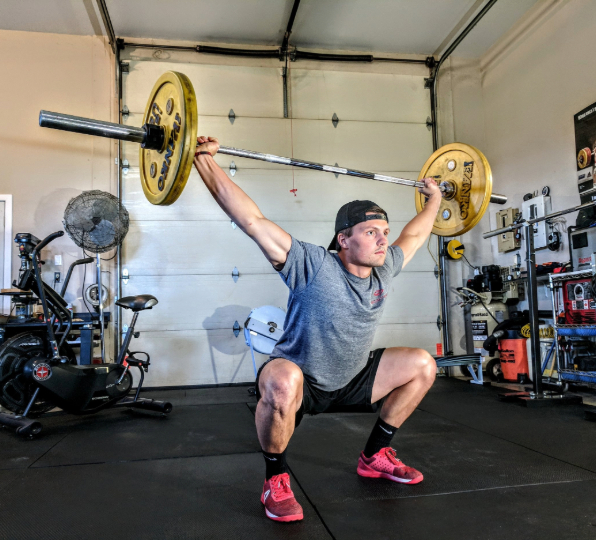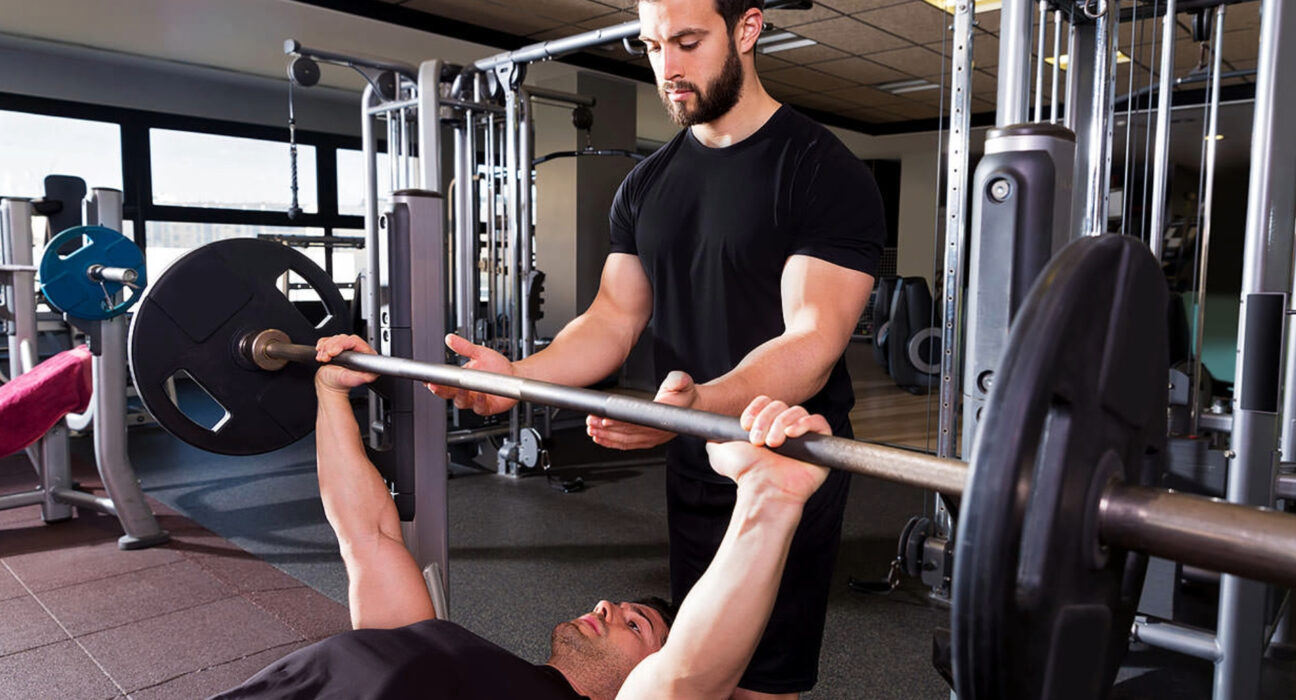Introduction:
For novices, starting a weight training regimen can be frightening, but with the correct direction and strategy, it can be very fulfilling. In addition to increasing muscular strength and endurance, weight training increases metabolism, strengthens bones, and improves general health. We’ll go over everything you need to know to get started with weight training in this beginner’s guide, including goal-setting, learning the fundamentals, and designing a safe and efficient workout regimen.
1. Set Clear Goals
Setting clear and specific goals is essential for anyone embarking on a weight training journey. Whether you’re a beginner or an experienced lifter, having well-defined goals provides direction, motivation, and a roadmap for success. Before diving into weight training, take some time to reflect on what you want to achieve and why it matters to you. Here are some steps to help you set clear goals for your weight training journey:
- Reflect on Your Why: Start by reflecting on your reasons for wanting to engage in weight training. Consider the benefits you hope to gain, such as building muscle, losing fat, improving strength, boosting confidence, or enhancing athletic performance. Understanding your underlying motivations will help you set meaningful goals that align with your values and aspirations.
- Be Specific: Once you’ve identified your overarching goals, break them down into specific, measurable objectives. Instead of setting vague goals like “get in shape” or “tone up,” define concrete targets such as increasing muscle mass by a certain percentage, reducing body fat to a specific level, lifting a certain weight on key exercises, or achieving a specific athletic milestone. Specific goals provide clarity and focus, making it easier to track your progress and stay accountable.
- Set Realistic Expectations: While it’s essential to aim high and challenge yourself, it’s also important to set goals that are realistic and attainable. Consider your current fitness level, lifestyle constraints, and any potential barriers or limitations you may face. Set goals that stretch your abilities but are within reach with consistent effort and dedication. Breaking larger goals into smaller, more manageable milestones can make them feel less overwhelming and more achievable.
- Create a Plan of Action: Once you’ve established your goals, develop a strategic plan to reach them. Outline the specific steps, strategies, and timelines you’ll follow to make progress towards your objectives. This may involve designing a structured workout program, incorporating progressive overload, implementing sound nutrition habits, prioritizing recovery and rest, and seeking guidance from qualified fitness professionals if needed. Having a clear plan in place will help you stay focused and on track towards achieving your goals.
- Track Your Progress: Regularly monitor your progress towards your goals and adjust your approach as needed. Keep track of key metrics such as body measurements, body composition, strength gains, performance improvements, and adherence to your training program. Celebrate your successes along the way, no matter how small, and use setbacks or challenges as opportunities to learn and grow. Keeping a training journal or using fitness tracking apps can help you stay organized and accountable.
- Stay Flexible and Adapt: Recognize that goals may evolve over time, and it’s okay to adjust your priorities as circumstances change. Stay flexible and open-minded, and be willing to modify your goals or strategies if necessary. Focus on continuous improvement and long-term progress rather than perfection or short-term outcomes. Remember that setbacks are a natural part of the journey, and resilience and perseverance are key to overcoming obstacles and achieving success.
2. Learn Proper Technique
Learning proper technique is paramount for anyone engaging in exercise, regardless of their fitness level or experience. Proper technique not only helps prevent injuries but also maximizes the effectiveness of your workouts by ensuring that you’re targeting the intended muscles and achieving optimal results. Here’s why proper technique matters and how you can prioritize it in your fitness routine:
- Injury Prevention: Performing exercises with incorrect form can increase the risk of injury, ranging from minor strains and sprains to more serious muscle tears, joint injuries, or even fractures. By learning and practicing proper technique, you can reduce the likelihood of experiencing exercise-related injuries, allowing you to stay active and consistent with your workouts over the long term.
- Muscle Activation: Proper technique ensures that you’re effectively engaging the target muscles throughout the entire range of motion of an exercise. This maximizes muscle activation and recruitment, leading to better strength gains, muscle development, and overall performance. By focusing on controlled movements and proper muscle engagement, you’ll experience more significant results from your workouts.
- Joint Health and Alignment: Correct form helps maintain proper joint alignment and movement patterns, reducing the risk of joint stress, strain, or dysfunction. By moving through exercises with proper alignment and biomechanics, you can help preserve joint health, minimize wear and tear on the joints, and prevent overuse injuries or chronic joint conditions over time.
- Efficiency and Effectiveness: Performing exercises with proper technique ensures that you’re targeting the intended muscles and getting the most out of each movement. By avoiding compensatory movements or relying on momentum, you can focus on working the muscles effectively, leading to greater gains in strength, muscle tone, and overall fitness. Proper technique also allows you to lift heavier weights safely, further enhancing your progress and performance.
3. Start with Compound Exercises
Starting your weight training journey with compound exercises is an excellent strategy for building a strong foundation of strength, muscle mass, and overall fitness. Compound exercises, also known as multi-joint exercises, involve movement at multiple joints and work multiple muscle groups simultaneously. By incorporating compound exercises into your workout routine, you can maximize efficiency, target multiple muscle groups in a single movement, and achieve balanced muscle development. Here’s why starting with compound exercises is beneficial and some key compound exercises to include in your training program:
- Efficiency and Time-Saving: Compound exercises allow you to work multiple muscle groups in one movement, making them highly efficient for maximizing your workout time. Instead of isolating individual muscles with single-joint exercises, compound movements engage multiple joints and muscle groups simultaneously, resulting in a more comprehensive workout in less time.
- Functional Strength and Movement Patterns: Compound exercises mimic natural movement patterns and activities of daily living, making them highly functional for improving strength, stability, and coordination. By training your body to perform integrated movements, you’ll develop functional strength that translates into real-world activities, such as lifting, pushing, pulling, and carrying objects with ease.
- Muscle Mass and Hypertrophy: Compound exercises are excellent for stimulating muscle growth and hypertrophy due to their ability to target large muscle groups and produce a significant metabolic response. By lifting heavier weights and working multiple muscle groups simultaneously, you can create greater mechanical tension and metabolic stress, both of which are key factors for muscle growth and development.
- Core Activation and Stability: Many compound exercises require core stabilization and engagement to maintain proper form and alignment throughout the movement. By incorporating compound movements such as squats, deadlifts, and overhead presses, you’ll not only strengthen major muscle groups but also improve core stability and posture, reducing the risk of injury and enhancing overall athleticism.
- Progressive Overload and Strength Gains: Compound exercises lend themselves well to progressive overload, a fundamental principle of strength training that involves gradually increasing the resistance or intensity of your workouts over time. As you become stronger and more proficient in compound movements, you can progressively increase the weight lifted, the number of repetitions performed, or the intensity of the exercise, leading to continuous strength gains and muscle development.
4. Gradually Increase Intensity
Gradually increasing intensity is a fundamental principle of effective and safe weight training, especially for beginners. Starting with light weights and progressively challenging your muscles over time allows for steady progress, reduces the risk of injury, and helps build a strong foundation of strength and technique. Here’s why gradually increasing intensity is essential for beginners and how to implement it in your training:
- Safety and Injury Prevention: Beginning your weight training journey with light weights reduces the risk of overloading your muscles, tendons, and joints, decreasing the likelihood of strains, sprains, or other injuries. By mastering proper form and technique with lighter loads, you develop a solid movement foundation that prepares you for safely handling heavier weights as you progress.
- Muscle Adaptation and Progress: Gradually increasing the intensity of your workouts stimulates muscle adaptation and growth, allowing your muscles to progressively become stronger and more resilient over time. By challenging your muscles with gradually increasing resistance, you encourage them to adapt and grow stronger, leading to continuous progress and improvements in strength, muscle tone, and overall fitness.
- Form and Technique Mastery: Starting with light weights allows you to focus on mastering proper form and technique without the distraction of heavy loads. By performing exercises with correct alignment, range of motion, and muscle engagement, you develop neuromuscular coordination and motor skills that lay the foundation for safe and effective lifting habits. Mastering proper form early on sets you up for long-term success and minimizes the risk of developing bad lifting habits that can lead to injury or plateauing.
- Progressive Overload: Gradually increasing the intensity of your workouts through progressive overload is a key principle of strength training that drives muscle growth and adaptation. As you become stronger and more experienced, you can progressively increase the weight lifted, the number of repetitions performed, or the intensity of the exercise to continue challenging your muscles and stimulating further progress. This gradual progression ensures that your workouts remain effective and continue to produce results over time.
5. Incorporate Resistance Machines
Incorporating resistance machines into your workout routine can be highly beneficial, especially for beginners who are new to weight training. Resistance machines offer several advantages, including providing stability, guidance, and safety through the movement, making them an ideal starting point for individuals who may be unfamiliar with free weights or bodyweight exercises. By utilizing resistance machines, beginners can target major muscle groups effectively, develop proper form and technique, and build a foundation of strength and confidence in the gym. Here’s why incorporating resistance machines is advantageous for beginners and some key machines to include in your training program:
- Stability and Guidance: One of the primary benefits of resistance machines is that they provide stability and guidance throughout the exercise movement. Unlike free weights, which require coordination and balance to stabilize, machines typically have fixed movement patterns and adjustable settings that help control the range of motion and ensure proper form. This stability reduces the risk of injury and allows beginners to focus on mastering the movement without worrying about balance or coordination issues.
- Safe and Controlled Environment: Resistance machines offer a safe and controlled environment for beginners to learn and practice weight training exercises. The guided movement patterns and adjustable resistance settings allow individuals to gradually progress at their own pace while minimizing the risk of injury. Beginners can feel confident knowing that they can adjust the resistance and settings to suit their fitness level and comfort level as they become more experienced.
- Isolation of Muscle Groups: Resistance machines often target specific muscle groups more directly than free weights, making them ideal for beginners who want to focus on developing strength and muscle definition in specific areas of the body. By selecting machines that target major muscle groups such as the chest, legs, back, and shoulders, beginners can effectively strengthen and tone their muscles while learning proper form and technique.
- Versatility and Accessibility: Most gyms and fitness centers are equipped with a variety of resistance machines that target different muscle groups and movement patterns. This accessibility makes it easy for beginners to incorporate resistance machines into their workouts and experiment with different exercises to target various areas of the body. Additionally, many resistance machines offer adjustable settings and attachments that allow for versatility in training, enabling individuals to customize their workouts to meet their specific needs and goals.
6. Include Bodyweight Exercises
Integrating bodyweight exercises into your workout routine is an excellent way to enhance strength, stability, and overall fitness, regardless of your fitness level or experience. Bodyweight exercises utilize your body’s own resistance to challenge your muscles, improve coordination, and increase functional strength. Whether you’re a beginner or an advanced fitness enthusiast, incorporating bodyweight exercises such as push-ups, squats, lunges, planks, and dips into your workout routine can provide numerous benefits and complement your weight training program. Here’s why including bodyweight exercises is advantageous and how to incorporate them effectively into your training:
- Convenience and Accessibility: One of the primary advantages of bodyweight exercises is their convenience and accessibility. You can perform bodyweight exercises virtually anywhere, with little to no equipment required. Whether you’re at home, in the gym, or traveling, bodyweight exercises allow you to maintain your fitness routine without the need for specialized equipment, making them ideal for individuals with busy schedules or limited access to gym facilities.
- Functional Strength and Movement Patterns: Bodyweight exercises mimic natural movement patterns and engage multiple muscle groups simultaneously, making them highly functional for improving overall strength, stability, and mobility. By performing exercises like push-ups, squats, lunges, planks, and dips, you develop strength and coordination that translates into real-world activities, such as lifting, bending, and carrying objects with ease. This functional strength is essential for maintaining independence, preventing injuries, and enhancing athletic performance.
- Variety and Versatility: Bodyweight exercises offer a wide variety of movements and variations that target different muscle groups and fitness components. From basic bodyweight squats to advanced variations like pistol squats or plyometric push-ups, there are endless ways to challenge your body and keep your workouts engaging and effective. Additionally, bodyweight exercises can be easily modified to suit your fitness level and goals, allowing for continuous progression and adaptation over time.
- Core Activation and Stability: Many bodyweight exercises require core stabilization and engagement to maintain proper form and alignment. Movements like planks, mountain climbers, and hanging leg raises target the core muscles, improving stability, posture, and overall core strength. By incorporating bodyweight exercises that engage the core, you’ll develop a strong and stable core that enhances performance in other exercises and activities.
- Progression and Challenge: Despite their simplicity, bodyweight exercises can be challenging and effective for individuals of all fitness levels. Beginners can start with basic variations of bodyweight exercises and gradually progress to more advanced variations as they become stronger and more proficient. Progressions such as increasing repetitions, adjusting leverage, or adding instability can intensify bodyweight exercises and provide ongoing challenges for continued growth and improvement.
7. Prioritize Recovery
Prioritizing recovery is crucial for anyone embarking on a fitness journey, particularly beginners who may not be accustomed to the demands of regular exercise. Recovery allows your body to repair and rebuild muscles, replenish energy stores, and adapt to the stress of training, ultimately leading to improvements in strength, endurance, and overall performance. By incorporating strategies to optimize recovery, such as allowing adequate rest between workouts, prioritizing quality sleep, staying hydrated, and fueling your body with nutritious foods, beginners can accelerate their progress, reduce the risk of injury, and achieve their fitness goals more effectively.
- Rest and Active Recovery: Giving your muscles time to rest and recover between workouts is essential for preventing overtraining and promoting muscle repair and growth. Beginners should aim to schedule rest days or incorporate active recovery activities such as walking, stretching, or yoga into their routine to facilitate recovery and reduce muscle soreness. Listening to your body and recognizing signs of fatigue or overtraining is key to determining when to rest and when to push yourself in your workouts.
- Quality Sleep: Adequate sleep is a cornerstone of effective recovery and overall health, yet it is often overlooked. Aim for 7-9 hours of quality sleep each night to support optimal recovery and performance. During sleep, the body releases growth hormone, repairs damaged tissues, and consolidates learning and memory, making it essential for muscle growth, repair, and recovery. Establishing a consistent sleep schedule, creating a relaxing bedtime routine, and optimizing sleep environment can help improve sleep quality and duration.
- Hydration: Staying hydrated is critical for supporting physiological processes, regulating body temperature, and facilitating nutrient transport and waste removal. Dehydration can impair athletic performance, hinder recovery, and increase the risk of muscle cramps and injuries. Beginners should aim to drink an adequate amount of water throughout the day, particularly before, during, and after exercise, to maintain hydration levels and support optimal recovery.
- Nutrition: Proper nutrition is vital for supporting muscle growth, repair, and recovery. Consuming a balanced diet rich in lean protein, complex carbohydrates, healthy fats, vitamins, and minerals provides the essential nutrients your body needs to repair and rebuild muscles, replenish glycogen stores, and optimize recovery. Aim to include a variety of nutrient-dense foods in your meals and snacks, such as lean meats, fish, poultry, eggs, dairy, fruits, vegetables, whole grains, nuts, and seeds, to support your fitness goals and overall well-being.
- Stress Management: Managing stress is an often overlooked but important aspect of recovery. Chronic stress can negatively impact sleep quality, hormone levels, immune function, and recovery processes, hindering progress in your fitness journey. Incorporating stress-reduction techniques such as mindfulness meditation, deep breathing exercises, yoga, or spending time in nature can help promote relaxation, reduce stress levels, and support optimal recovery.


Conclusion:
Weight training is a valuable and rewarding form of exercise that offers numerous benefits for beginners and experienced lifters alike. By following this beginner’s guide to weight training and focusing on proper technique, gradual progression, and consistency, you can build strength, improve fitness, and achieve your fitness goals safely and effectively. Remember to listen to your body, prioritize recovery, and enjoy the journey as you embark on your weight training adventure.












